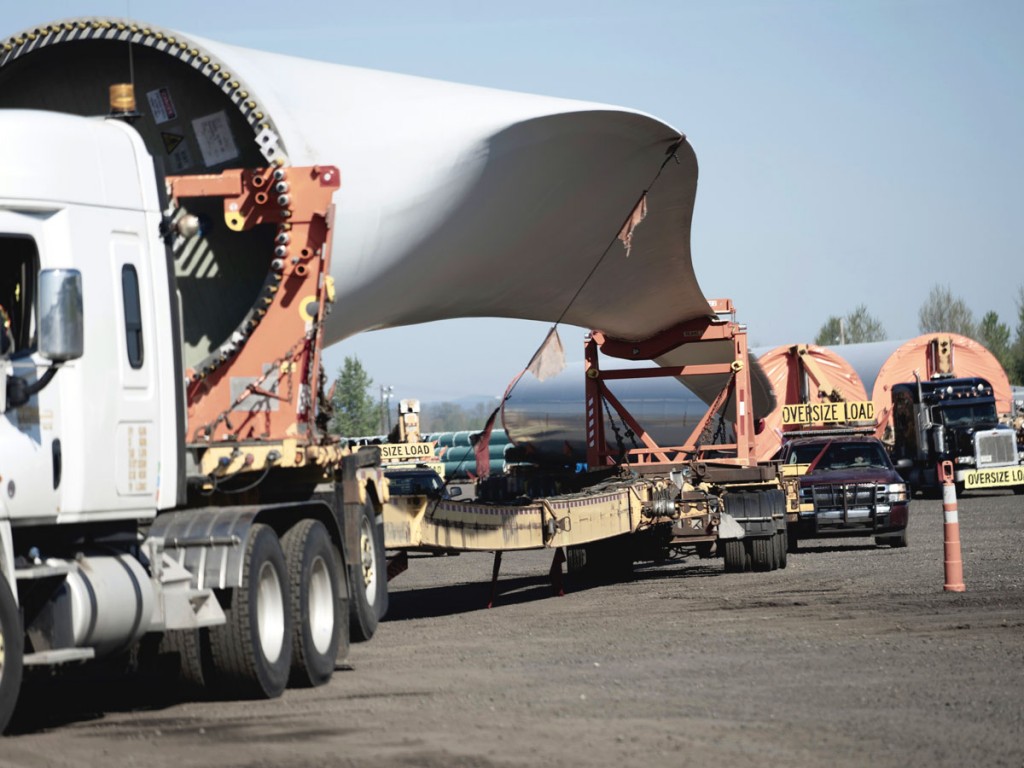Port of Vancouver USA adeptly moving record wind cargo units
The scores of wind energy blades being shipped through the Port of Vancouver USA include the longest such project cargo units ever to cross the docks of a West Coast port. Indeed, each of these enormous blades is nearly the length of a football field.
The Port of Vancouver USA – on the Columbia River in Washington state – is surmounting external challenges from both COVID-19 and Pacific Northwest wildfires to adeptly handle a half-dozen shiploads of the massive project cargo for deployment at a leading-edge Canadian wind farm.
Over the course of two decades of leadership in moving wind cargos, Port of Vancouver USA officials have pointed to the global hub’s ideal location, about 100 miles upriver from the Pacific Ocean, as well as availability of abundant laydown area, superb cargo-handling infrastructure and plentiful experienced labor. For these latest shipments, the port also is expertly coordinating the 1,100-mile inland move while bringing in additional union dockworkers.
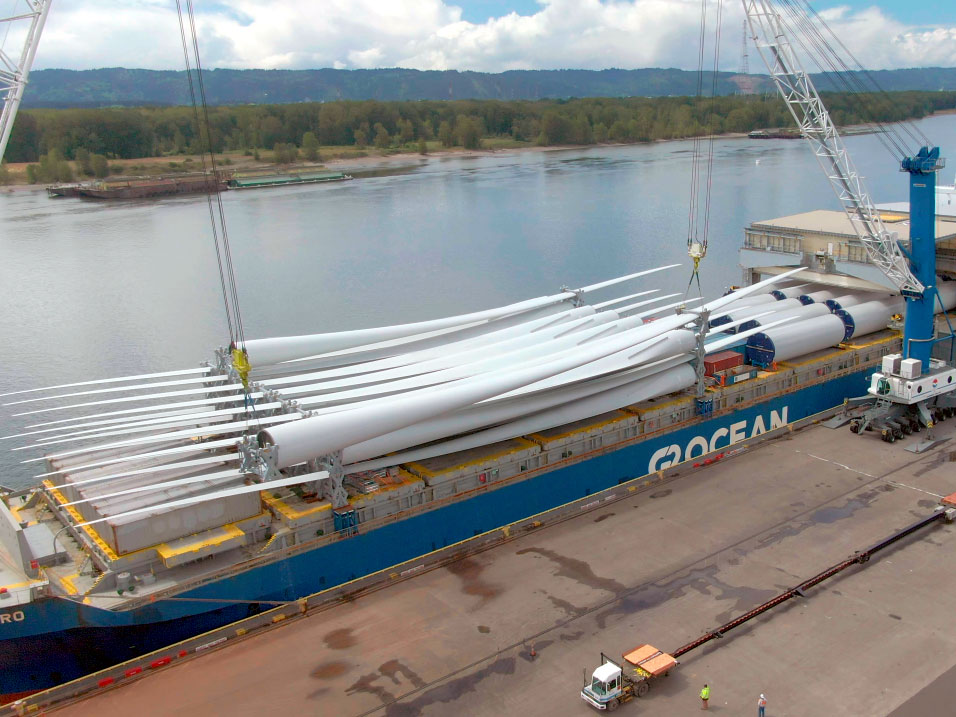
Port overcoming challenges
“The biggest challenge hands-down for this has been putting all the pieces of the puzzle together for the road clearances outside the gate of the port,” Alex Strogen, the Port of Vancouver USA’s chief commercial officer, told AJOT. The effort has entailed working closely with specialized trucking partners, plus officials of four U.S. states, to get the oversized cargo moving across roadways currently undergoing traditional summertime repairs.

“This year has been an ongoing story of overcoming challenges,” Strogen said, “whether COVID-19 or the catastrophic wildfires, which, among other things, have displaced many port laborers and their families. That said, we’ve kept the cargo moving safely and swiftly.”
Port officials have collaborated with the International Longshore and Warehouse Union and the Pacific Maritime Association to expedite hiring of 35 additional highly proficient port workers. These men and women are augmenting the port’s dockside labor team to ensure the immense wind energy units are safely offloaded from open-hatch vessels importing them from China.
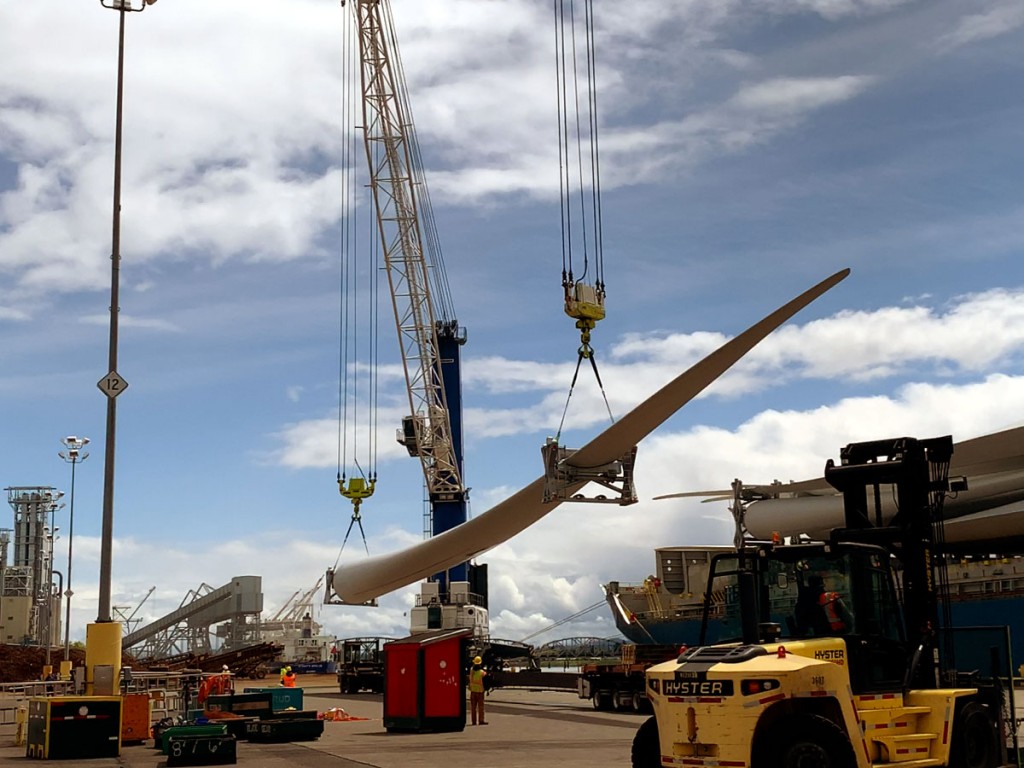
Unprecedented 250-foot length
By yearend, six trans-Pacific G2 Ocean sailings are scheduled to bring to the Port of Vancouver USA a total of 50 complete Goldwind turbine sets, encompassing more than 750 large-scale components, including 40 with blades measuring an unprecedented 250 feet in length. The first call to the port was completed in May by G2 Ocean’s Star Kilimanjaro, with the third delivery taking place in mid-September. The units, manufactured in Northern China, are being exported via the Port of Lianyungang.
At the Port of Vancouver USA, the units are offloaded using a pair of heavylift Liebherr cranes. The port’s 85-acre laydown area – among the West Coast’s largest waterside staging areas for project cargo – holds blades and related turbine components until they are loaded onto specialized overlength truck trailers of Calgary-based Totran Transportation Services for the journey across the roads of Washington, Oregon, Idaho and Montana and into the Canadian province of Saskatchewan.
The turbine blades and other components are being delivered to Toronto-based Potentia Renewables Inc.’s Golden South Wind Energy Project, spanning 34,000 of leased agricultural land outside Assiniboia, Saskatchewan. The project, slated to open in 2021, is utilizing the latest in permanent magnet-direct-drive turbine technology, developed by Chicago-headquartered Goldwind Americas. With its 900,000-megawatt-hour generation capacity, the project bodes to significantly reduce carbon dioxide emissions compared with coal-fired power plants, equivalent to eliminating the pollution from half the vehicles in Saskatchewan’s capital city of Regina.
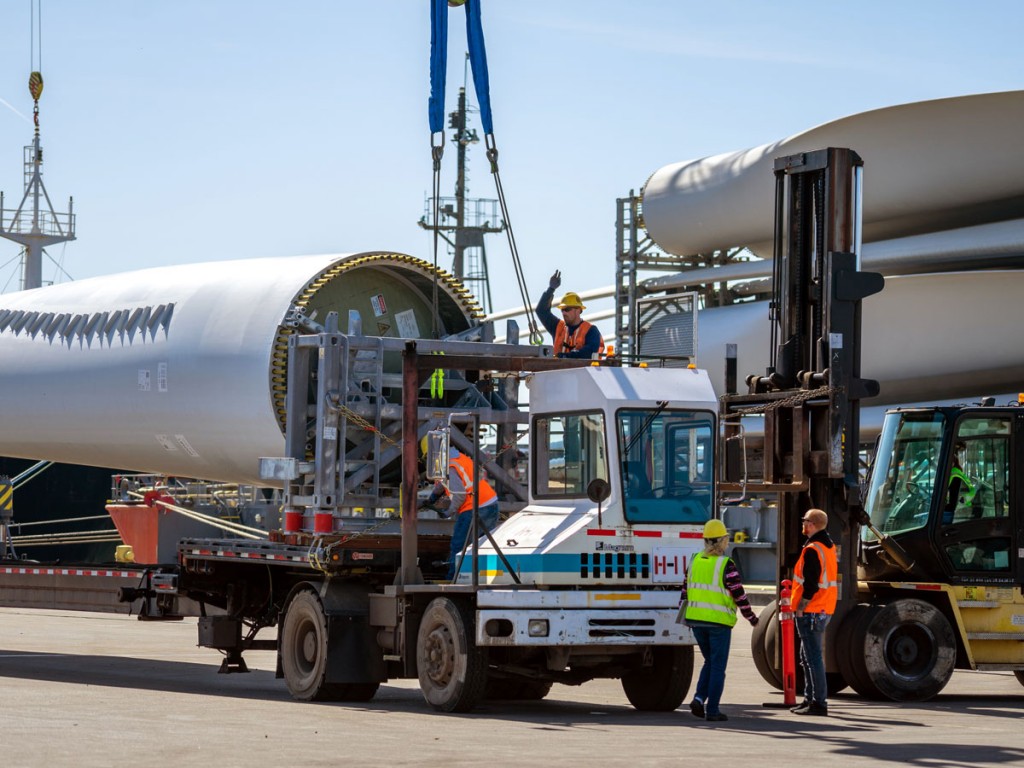
Perfect ‘green’ fit for port
“Our customers know we can handle this large cargo with our heavylift cranes, acres of laydown space, highly skilled workforce and dedication to renewable energy,” Strogen said. He gave additional credit to Vancouver-based Jones Stevedoring and river and bar pilots for their roles in the latest turbine moves, adding that the Port of Vancouver USA once again anticipates handling more wind energy shipments than any other U.S. West Coast port in 2020.
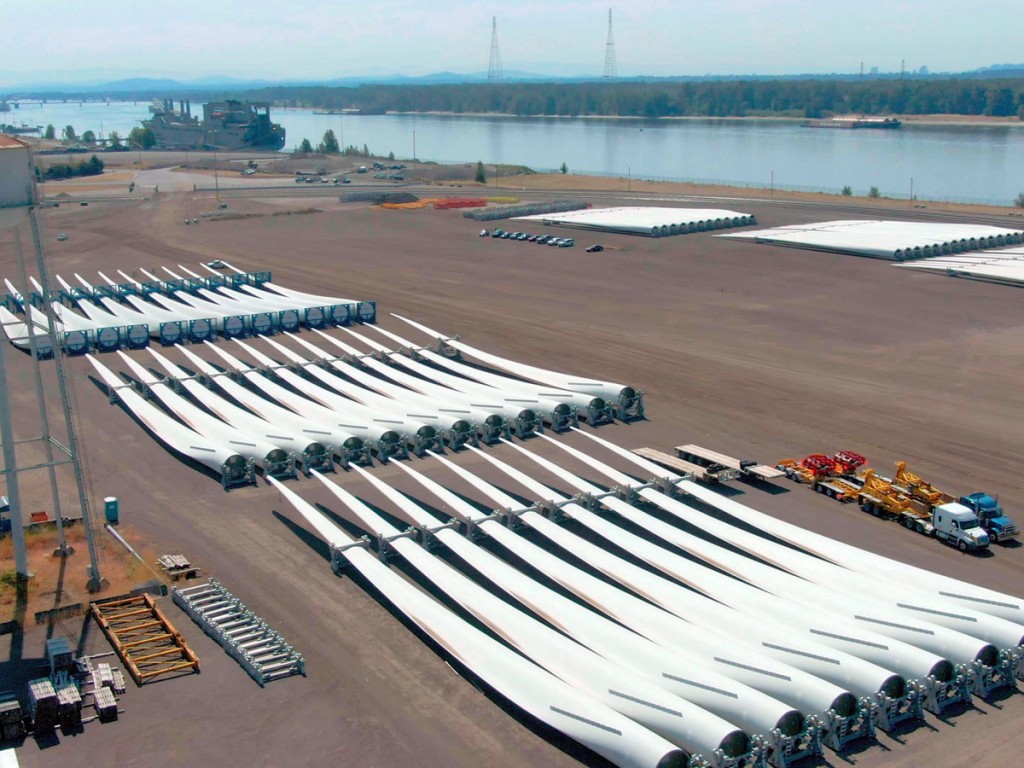
Furthermore, the Port of Vancouver USA is dedicated to meeting today’s global economic, environmental and social needs without compromising the ability of future generations to meet theirs. Ongoing sustainability efforts include a decade of partnering with the Ridgefield National Wildlife Refuge to increase purple martin populations in Southwest Washington through an on-port colony catering to the rare migratory birds.
“Environmental stewardship takes many forms at the Port of Vancouver USA,” Strogen said. “Whether providing nesting gourds for birds or a preferred transport hub for green energy cargos, the port is engaged in a board spectrum of partnerships that actively preserve and protect the environment for generations to come.”
